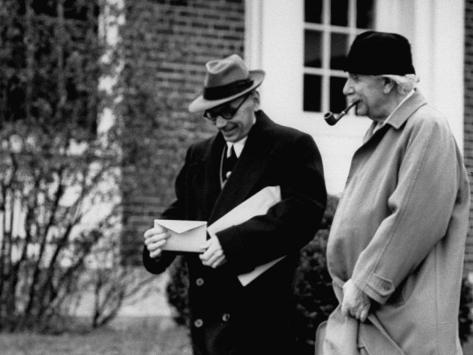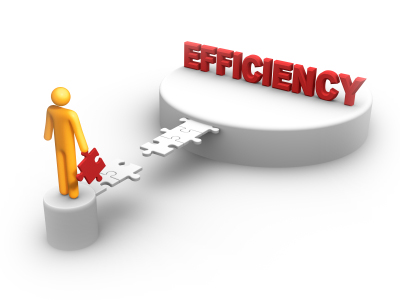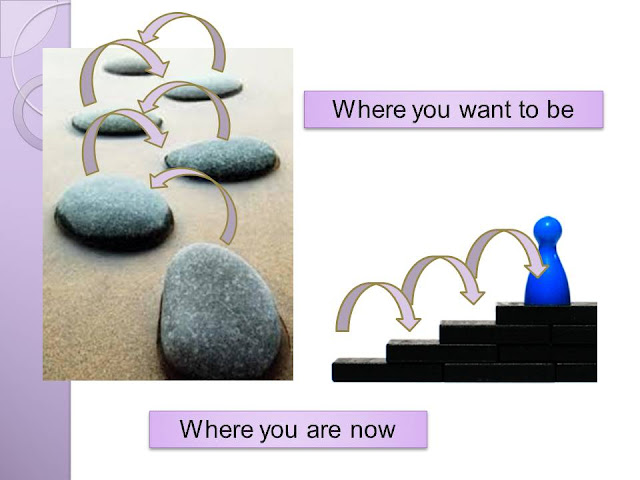Sometimes it feels as if the world is in such disarray and disrepair.
There are revolutions, upheavals and bombings. The economic downturn has been devastating, for sure. But even in the heyday of the economy, large sectors of the world population were mired in poverty and disease. Industrial development and technology advancement are unrelenting, amazing, and profound, but what has happened to our environment - our land, oceans and skies?
Conceptually and practically, I’m working on algorithms to help us solve wide-sweeping problems, such as poverty, disease, conflict, and environment impact. But needless to say, this is an extraordinarily difficult effort, and I’m just in the early stages of this work.
Going forward, though, I simply hope to have a viable framework completed within whatever is left of my lifetime.
Still, just in talking with friends over the past two years, I have felt a sense of urgency to advance this work.
Abiding points, guiding posts
 |
| (image credit) |
1. Understanding these worldwide problems as best as we can is paramount. This may mean reviewing what we know about their nature - their underlying DNA, as I call it - and perhaps revising our assumptions and approaches to solving them.
2. I posit that once understood sufficiently and accurately, problems shed light on workable, effective solutions. It’s about letting a problem speak for itself.
3. Implementing a solution properly means that we do what actually works, in light of that problem. It’s a simple algorithm: Do only what works, and avoid doing what doesn’t work.
From Poverty, to Prosperity
 |
| (image credit) |
I had a really good exchange recently with Juliet Barbara, a writer with Forbes magazine. I offered the idea that resolving poverty may require relatively low or simple technology, which is affordable and accessible to impoverished villages.
Consider what Prof. Anil Gupta relates in his TED Talk, for example. Impoverished villagers in India have built washing and grinding machines by using the simple mechanics of a bicycle. That kind of homegrown ingenuity and self-sufficiency, especially when it comes from the very heart of the problem itself, that is, from the circumstances and people within those villages, can go a long way, I think, of handling the heartbreak of poverty.
Tapping this homegrown ingenuity and self-sufficiency is an essential component of my Algorithm for Prosperity.
From Disease, to Health
Serious efforts abound on treating people and curing diseases, for example, Doctors without Borders. Also, through their Bill and Melinda Gates Foundation, the philanthropist couple have poured hundreds of millions of dollars into eradicating diseases such as polio. Further, the World Health Organization (WHO) has worked tirelessly to provide education and resources to ensure worldwide health.
There is the vertical approach to curing diseases, which means drilling down on polio, for instance, and investing time, effort and resources to eliminating it. There is also the horizontal approach, which means addressing the contextual factors that cause disease and other, broader ails in a village.
I propose that we avoid taking a premature approach (rf. Gates Rethinks his War on Polio). I propose à la The Core Algorithm and Theory of Algorithms that we first grasp the health issues within a given village, locale or region, before taking any approach. Particular issues may be best served with a vertical approach, or perhaps a horizontal approach, or even an integrated, unique hybrid of both, which best serves the purpose and needs of a certain village.
Determine the best approach – vertical, horizontal or hybrid – vis-à-vis the unique challenges and wishes of a particular locale is an essence of my Algorithm for Health.
From Conflict, to Resolution
I was talking to two friends, who were visiting me in Dubai. In the midst of uprisings in Bahrain, where they lived, they were frightened for their children’s safety. Their idea was sensible: Bring the protestors and the officials together for a dialogue.
However, I suggested that this is probably a second or third step in the process. It means reaching out, first, to King Hamad, the ruler of Bahrain, in an effort to grasp the situation in his country better and just as importantly to discern his views, ideas and concerns, some of which I anticipate would be very sensitive and very private. He is the ruler after all, and has the power and authority to make major decisions, so it makes better sense to begin with him first.
So before we bring the conflicting parties to the table, we may do what Japanese managers tend to do: Approach key stakeholders individually first, again to discern issues and interests and forge trusting relationships. There is a Japanese phrase for this, which I'm afraid I cannot remember at the moment, but which means ‘tending to your garden’.
I advised my friends that it probably wouldn’t be I myself, who meets with King Hamad. I’m an unknown person, and he’s unlikely to agree to meet with me. So who is the best person? Well, it has to be someone whom the King trusts, who has authority and can speak frankly with him. Perhaps, then, it is that person whom I advise.
After speaking with the King, I advise speaking with key figures in the conflict as well, and discerning their thoughts, experiences, and ideas. Only when we can ascertain as best as possible that a good outcome can be gained, do we bring conflicting parties together.
When it comes to human affairs, we must expect the unexpected. We must prepare for a difficult, perhaps contentious discussion. We must be cognizant that resolving conflicts require time, patience and effort, and most likely large doses of kindness, caring and faith.
These are all elements of my Algorithm for Resolution.
From Plundering, to Replenishing the Environment
There are doomsday-sayers that predict the collapse of the world. That population growth is outstripping resources for supplying our sustenance. That humankind has done little but plunder and pollute our earth, oceans and skies.
I am more optimistic and hopeful, in contrast, yet realistic and practical. I believe in the equilibrium that nature creates for life on earth. While population growth has slowed down in recent decades, the fact that it’s still on the rise suggests, at least to me, that resources are still more than sufficient to support humankind, at least on the whole.
How long will resources last, well, we don’t really know for sure, do we.
But if my belief in an equilibrium actually has merit, then, it requires us to consider a potentially dreadful but inevitably truthful notion: That is, if the pace of population growth does at some point outstrip the earth’s abilities to replenish its resources, and thus provide for us, then that growth will slow down and perhaps even reverse itself.
In other words, more people around the world will die than are born at any given period. So not only will the population stop growing, but the curve will slide downward.
God forbid that something like that will happen. But in an air of optimism and hope, once the equilibrium has been re-established, that is, when earth can sustain humankind again, then the decline of world population will cease and turn toward growth again.
How well we keep (or regain) equilibrium for proper sustenance and growth depends on a host of weighty actions, such as: (a) We halt our adverse impact on the environment. (b) We reduce our consumption or alter our consumption pattern. (c) We somehow assist Mother Earth in replenishing herself.
These are seeds of my Algorithm for Replenishment.
Consider what Prof. Anil Gupta relates in his TED Talk, for example. Impoverished villagers in India have built washing and grinding machines by using the simple mechanics of a bicycle. That kind of homegrown ingenuity and self-sufficiency, especially when it comes from the very heart of the problem itself, that is, from the circumstances and people within those villages, can go a long way, I think, of handling the heartbreak of poverty.
Tapping this homegrown ingenuity and self-sufficiency is an essential component of my Algorithm for Prosperity.
From Disease, to Health
 |
| (image credit) |
There is the vertical approach to curing diseases, which means drilling down on polio, for instance, and investing time, effort and resources to eliminating it. There is also the horizontal approach, which means addressing the contextual factors that cause disease and other, broader ails in a village.
I propose that we avoid taking a premature approach (rf. Gates Rethinks his War on Polio). I propose à la The Core Algorithm and Theory of Algorithms that we first grasp the health issues within a given village, locale or region, before taking any approach. Particular issues may be best served with a vertical approach, or perhaps a horizontal approach, or even an integrated, unique hybrid of both, which best serves the purpose and needs of a certain village.
Determine the best approach – vertical, horizontal or hybrid – vis-à-vis the unique challenges and wishes of a particular locale is an essence of my Algorithm for Health.
From Conflict, to Resolution
 |
| (image credit) |
However, I suggested that this is probably a second or third step in the process. It means reaching out, first, to King Hamad, the ruler of Bahrain, in an effort to grasp the situation in his country better and just as importantly to discern his views, ideas and concerns, some of which I anticipate would be very sensitive and very private. He is the ruler after all, and has the power and authority to make major decisions, so it makes better sense to begin with him first.
So before we bring the conflicting parties to the table, we may do what Japanese managers tend to do: Approach key stakeholders individually first, again to discern issues and interests and forge trusting relationships. There is a Japanese phrase for this, which I'm afraid I cannot remember at the moment, but which means ‘tending to your garden’.
I advised my friends that it probably wouldn’t be I myself, who meets with King Hamad. I’m an unknown person, and he’s unlikely to agree to meet with me. So who is the best person? Well, it has to be someone whom the King trusts, who has authority and can speak frankly with him. Perhaps, then, it is that person whom I advise.
After speaking with the King, I advise speaking with key figures in the conflict as well, and discerning their thoughts, experiences, and ideas. Only when we can ascertain as best as possible that a good outcome can be gained, do we bring conflicting parties together.
When it comes to human affairs, we must expect the unexpected. We must prepare for a difficult, perhaps contentious discussion. We must be cognizant that resolving conflicts require time, patience and effort, and most likely large doses of kindness, caring and faith.
These are all elements of my Algorithm for Resolution.
From Plundering, to Replenishing the Environment
 |
| (image credit) |
I am more optimistic and hopeful, in contrast, yet realistic and practical. I believe in the equilibrium that nature creates for life on earth. While population growth has slowed down in recent decades, the fact that it’s still on the rise suggests, at least to me, that resources are still more than sufficient to support humankind, at least on the whole.
How long will resources last, well, we don’t really know for sure, do we.
But if my belief in an equilibrium actually has merit, then, it requires us to consider a potentially dreadful but inevitably truthful notion: That is, if the pace of population growth does at some point outstrip the earth’s abilities to replenish its resources, and thus provide for us, then that growth will slow down and perhaps even reverse itself.
In other words, more people around the world will die than are born at any given period. So not only will the population stop growing, but the curve will slide downward.
God forbid that something like that will happen. But in an air of optimism and hope, once the equilibrium has been re-established, that is, when earth can sustain humankind again, then the decline of world population will cease and turn toward growth again.
How well we keep (or regain) equilibrium for proper sustenance and growth depends on a host of weighty actions, such as: (a) We halt our adverse impact on the environment. (b) We reduce our consumption or alter our consumption pattern. (c) We somehow assist Mother Earth in replenishing herself.
These are seeds of my Algorithm for Replenishment.
In summary
These are all tall tasks, profoundly difficult problems to solve. It will require literally all of us to solve. No one person, no simple clustering of organizations, and no one-off collaborative effort will be enough to solve these problems.
As I’ve said before, I’m still working on the proof for my seminal thesis that every problem has a solution. But I very much believe, and I am very confident, that indeed there are solutions for these and other problems I’ve addressed in these episodes.
This is Theory of Algorithms. This is The Core Algorithm.
Thank you.
© 2013 by Ron Villejo, PhD



































